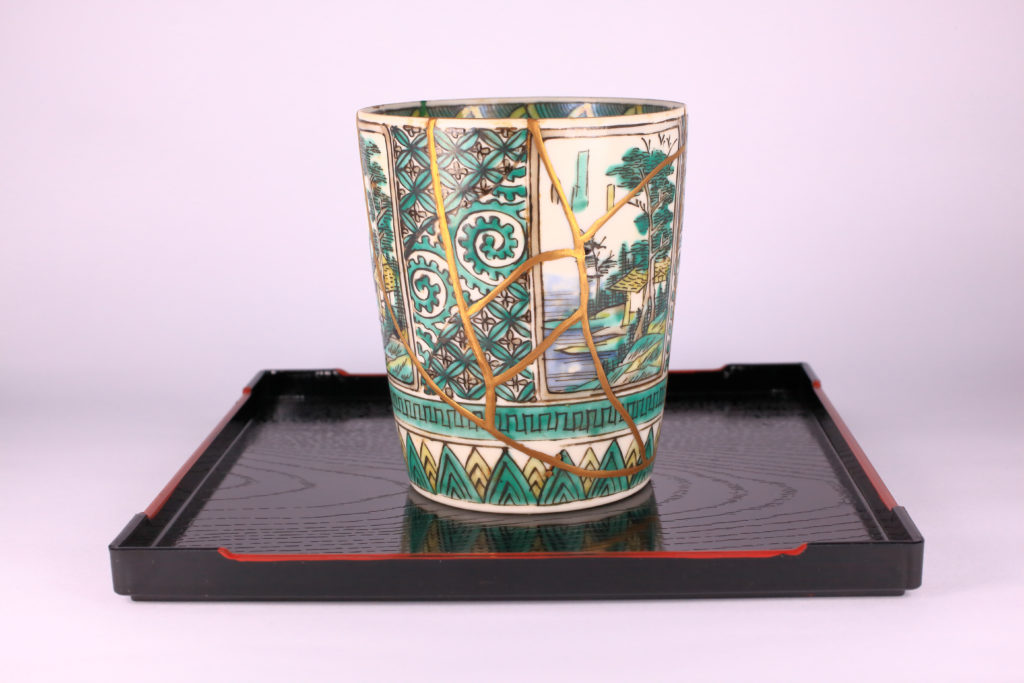
Broken Window Theory Part 2
‘Change your focus from what you can’t do to what you can do and others will see your change, you won’t have to prove yourself or convince them, they will simply see it.’
In the last blog, we ended with an invitation to focus on what is possible and positive rather than getting lost in the difficulties and the negatives. In today’s blog I want to introduce to a principle that teaches you to work with perceived failure. A professional colleague and good friend, Huseiyn Djemil, who is the director of a company called “Towards Recovery”, introduced me to this. The focus is on drawing positives out of negatives.
The Kintsugi Approach
Imagine your favourite picture or ornament or something that is truly sentimental and valuable to you, and it drops and breaks or cracks in several places. Your reaction might be “it’s useless, it’s worthless, I can’t enjoy it any more, and no-one would want to look at it now” or, it’s cracked so it has now lost all its value. You might then throw it away in anger or regret about what caused it to break.
According to art historians, Kintsugi came about by accident. When the 15th century shogun Ashikaga Yoshimasa broke his favorite tea bowl, he sent it to china to be repaired and was disappointed that it came back stapled together. The metal pins were unsightly, so he sought the help of local craftsmen who came up with a solution. They decided to fill the cracks with a golden lacquer, making the bowl unique and more valuable. This repair elevated the fallen bowl back to its place as shoguns favorite and prompted a whole new art form.
In essence what had been created here was a total change to the mindset. This mindset was that because something is broken, and has cracks or appears broken, as in the broken window theory, if the object is treated with interest, tenderness and loving care, it can be viewed in a totally different light. The scars or cracks can become aspects of its beauty, an asset, even viewed in awe. They inform the viewer that the object has been on a journey, that it is resilient, and out of its experience something new and special has been created. The gold that fills the cavities can now represent character, strength, bravery and awareness.
Generally, we probably don’t expect others to be perfect. We may in fact, appreciate others more when they expose their vulnerabilities, show old wounds or admit errors. This shows us that there is no such thing as perfection and that wounds can heal, and the art of growth is how the individual manages their memory of the wound.
Another example of this is the scars or stretch marks that women are often left with after pregnancy. You might hear women complain about these and take care to ensure that they are never visible. Other women may say they represent a journey, a significant life event.
But what most will say is that the stretch marks are a small price to pay for the end result. That is the child that will now introduce them to skills and resources they might never otherwise have known they had. Parenting is after all, an experiential process of constant challenges and learning.
So how might this relate to substance use? Much of the research informs us that many people who use drugs and alcohol problematically, have experienced trauma in the past and that it is necessary to revisit the past to understand current behaviour, responses, level of self worth or belief, and how you live your life now. But how much focus is put onto the trauma that you give yourself because of the consequences of your using. You may have lost many jobs, your children may have been removed from you, you may have spent time in prison or become homeless, etc. These are all traumatic events. If the impact of these events is not also voiced and processed, this can also lead you back to using in what you believe might be a means of managing the trauma and the difficult feelings. This belief can be at a conscious or at a sub-conscious level.
Going back to the Kintsugi approach, you could say that your mental and physical scars have shaped who you are today. They can be viewed as an aspect of your beauty. They can inform you of your resilience, your survival instincts, your empathy and your courage. The gold that is placed in the cracks can represent a better version of yourself that explains your journey in High Definition, but most importantly that you want to become the best version of yourself that you can be. It highlights your uniqueness and your value, and what it has shown everyone is that, like everyone else, you are not perfect, but what you are, is a warrior who is able to overcome adversity. Your scars highlight your resilience, your tenacity and your endless ability to embrace what comes into your life and transform it into something beautiful.
Welcome to kintsugi – wear your scars with pride because they tell a unique and intriguing story about the greatness that is you.
Christopher Robin
21 April 2020
Christopher Robin
Founder/Managing Director
Tel: 0208 2443960 / 07515 663621
Email: info@enigma-drugs-consultancy.co.uk
Website: https://enigma-drugs-consultancy.co.uk


